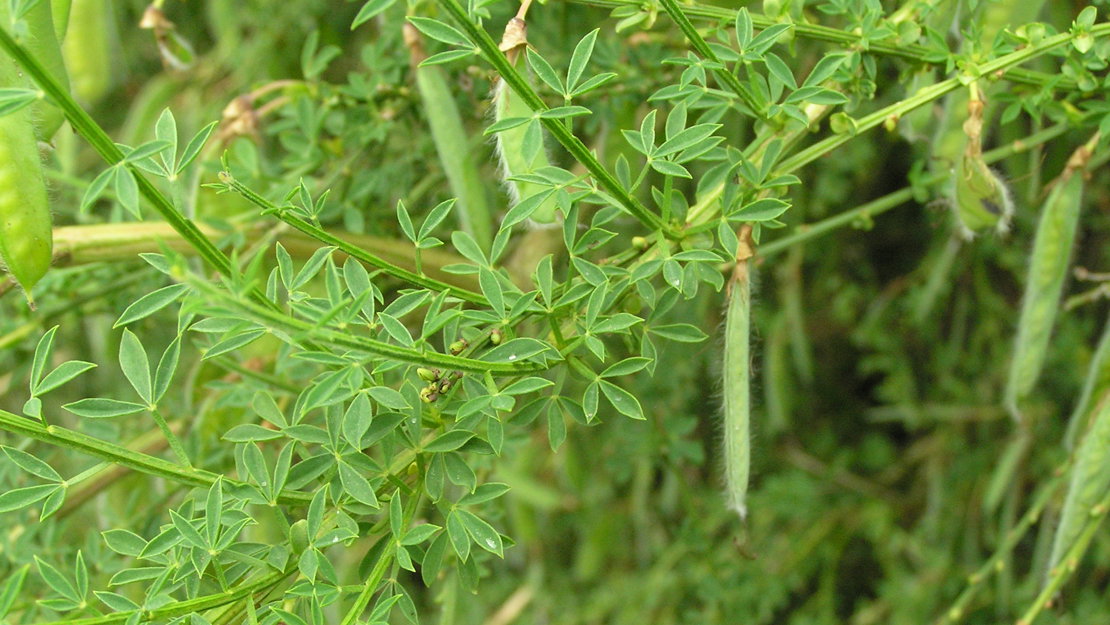Cytisus scoparius
Wild broom
Family: Fabaceae
Origin: Eurasia

Regional Pest Management Plan (RPMP) status
- Whole region — Progressive containment, council delivered
- Hauraki Gulf Controlled Area Notice pest
General description
Wild broom is here defined as all Cytisus scoparius, except cultivated varieties. Dense, multi-stemmed perennial shrub < 2 m tall. Stems are five-angled, photosynthetic and green when young, turning woody with age. Leaves are small, < 15 mm long, hairy, trifoliate and deciduous.
Flowers are yellow, pea-like, < 25 mm and produced in spring – summer. Seed pods are hairy and green, maturing to black.
What you need to know
To help protect our environment:
- You must not breed, distribute, release or sell wild broom within the Auckland region.
- You must not plant wild broom within the Auckland region.
Auckland Council will manage wild broom at all rural sites where it is known to occur.
If you see wild broom anywhere in rural Auckland, please report it to Auckland Council at pestfree@aucklandcouncil.govt.nz.
Habitats
Lowland and montane areas, shrubland, grassland, steep slopes, open forest, riparian areas, riverbeds, wasteland, disturbed habitat, pasture, plantations.
Dispersal
Seeds dispersed by explosive dehiscence and contaminated soil on livestock. Human-mediated dispersal through movement of contaminated soil on vehicles and machinery.
Impact on environment
Forms dense stands and competes with native vegetation. Reduces pasture and plantation productivity. Nitrogen fixer.
Control
Recommended approaches
Do not attempt to undertake control of this species. Please report to Auckland Council.
Caution: When using any herbicide or pesticide please read the label thoroughly to ensure that all instructions and safety requirements are followed.



